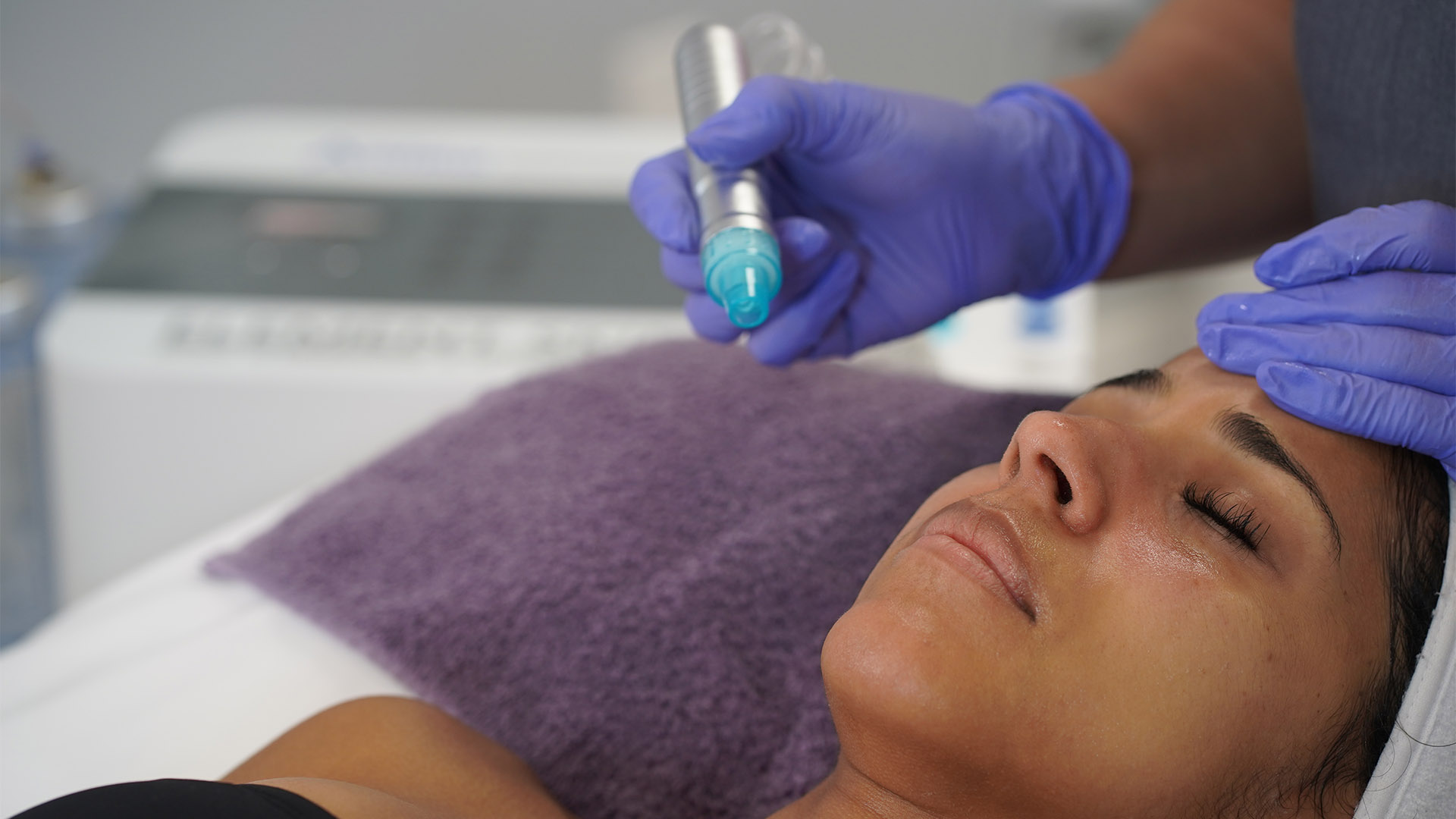Chemical peels for acne are just one of the many ways to use chemical peels as a professional esthetician in 2022. Today’s estheticians have so many options on how to effectively exfoliate and peel your clients’ skin; quite frankly it’s overwhelming. Every brand has their own mixture and formula but what is best and what do we do? To tackle this question, let’s first discover the basics of peeling.
When Do We Use A Chemical Peel on Skin?
Our skin exfoliates on average every 28 days. As we get older, however, this cycle stretches to 30-40-50-60 days. Peeling should be performed when there is a reason to peel. There are light, medium, and deep peels that we can select from to accommodate and address specific skin concerns. When to peel, how frequent, and how deep all depends on what specific concern you’re addressing. In general, we should never peel during the summer months or in hot weather due to the increased risk of post-inflammatory hyperpigmentation for generally Fitzpatrick levels III and above.

Build a better spa experience for your clients with
DermaJEM’s Spa Equipment and Hydroserums
Estheticians love DermaJEM’s equipment because they’re easy to use and they deliver real results to keep your clients coming back for more treatments.
Learn more about how DermaJEM can elevate your beauty business.
Chemical Peels For Acne
Understanding which chemical peels for acne to recommend using in treatment comes down to what is causing the acne. Often acne occurs due to an overproduction of sebaceous oil and P. Acne bacteria growth, however, acne can also occur due to a change in pH levels, imbalance in hormones, improper cell turnover and exfoliation, and but not limited to environmental factors such as makeup use, dirt, debris, smog, and pollution.
Beya Hydroxy Acids (Salicylic) is a great chemical peel for acne.
They become a clear candidate for peeling the skin for active acne to aid in rapidly breaking down cells and oils to provide a smooth clear finish while neutralizing the proliferation of P. Acne bacteria.
Retinols are also an effective treatment in addition to blends of AHA chemical peels for acne and BHA chemical peels for acne to treat multiple layers of the skin.

Contribution by Lincoln Lee
Lincoln Lee serves as a Director of Global Operations at Dermaesthetics Beverly Hills, Inc. covering 20+ countries and education. He began his career in finance and law, leading him to Asia where he worked internationally as a Director of Operations negotiating contracts and marketing ventures in China, Korea, Vietnam, and Japan. Prior to joining Dermaesthetics, Lincoln worked for various legal and financial institutions in private equity and investment banking, Ministry of Legislation, Republic of Korea, CGV Entertainment, US film industry, and was previously the director of the Beauty MBA Program at Pacific States University, Los Angeles. He also works with MUD, Cinema MakeUp School, Riverside Community College, Santa Barbara City College, Loyola Marymount University, University of San Diego, UCI Medical Center, and various Esthetic and Advanced Esthetic institutions across the world, engaging in skin care topics and legal compliances. He currently sits on various advisory boards for mobile start up technologies, emerging skincare and device companies, and consults for privately held beauty brands. Lincoln currently holds an Executive MBA, JD, LLM and various certificates from Stanford, Thunderbird, and Harvard Business School.
Peels For Fine Lines – Wrinkles
When peeling for wrinkles and fine lines, it’s best to utilize acids and treatments that will promote collagen as well as elastin formation and thickening of our cellular cement all while providing additional nutrients to inhibit the melanogenesis process and reduce our auto-inflammatory response. For light to medium treatments, Glycolic acids are a great acid derived from sugar cane. Its molecular size is fitting for most skin types and does very well in breaking down key proteins to trigger an even and smooth peel/exfoliation. For stronger peels, depending on the Fitzpatrick, Jessners, a combination of Salicylic, Lactic, and Glycolic or Resorcinol (SLR or SLG) are wonderful chemical peels to target a series of layers of the epidermis at one time to trigger a great keratinization response.
Peels For Hyperpigmentation
Peeling for hyperpigmentation is often directed at epidermal hyperpigmentation only versus dermal hyperpigmentation. The key driver when selecting peels for this skin concern is to not trigger the melanogenesis process during the treatment. All patients or clients will have a probability of post-inflammatory hyperpigmentation however during the peel/ treatment, its imperative to not induce the melanogenesis response. The Deep Sea Herbal Organic Peel is excellent for this. An alternative to chemical peels the Sea Herbal Organic Peels have been much more popular in other parts of the world than the US due to the increased ethnic diversity and homogeneity in other countries. These organic peels utilize our body’s own natural self-defense to trigger keratinization and allow the professional to control the depth of the peel rather than chemical peels and controlling the peel based on time applied onto the skin.
In summary, selecting the right peel for your client begins not with the type of peel itself but with the client and the cause of their skin concern. Approach the client’s skin with a road map and plan to restore the skin’s barrier function, blemishes, cell turnover, and overall health to keep the skin looking great and improving upon it daily.

